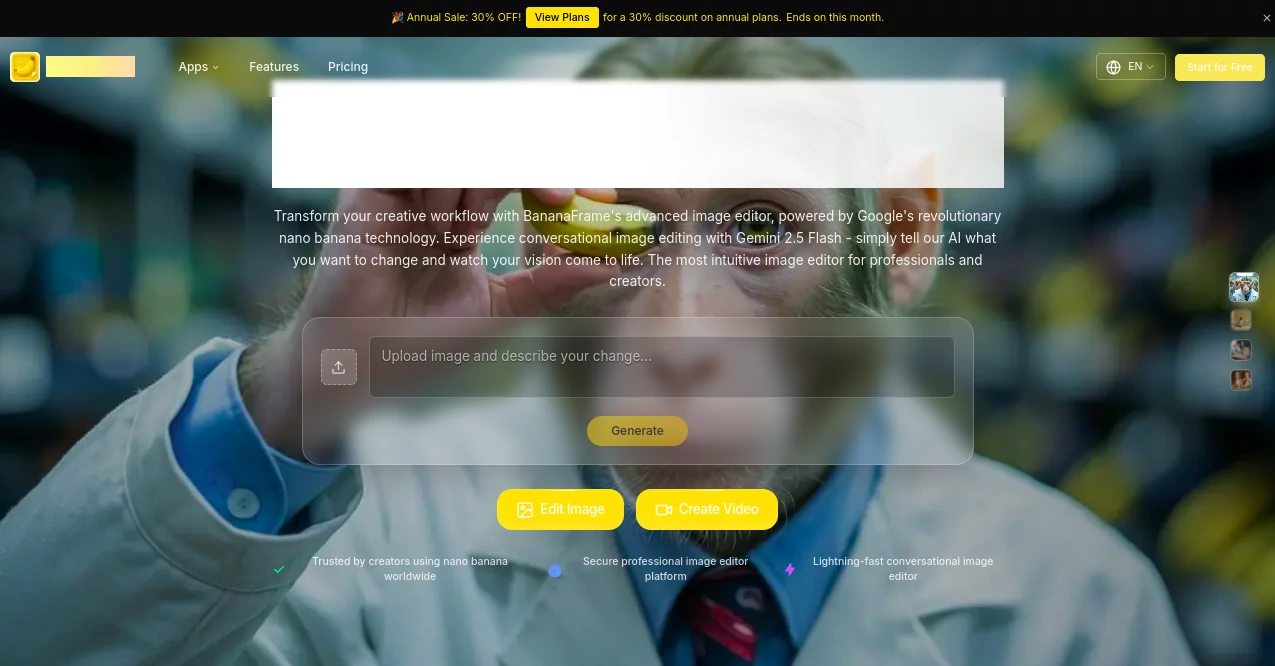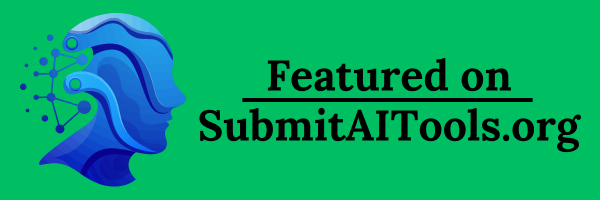🧠 AI Quiz
Think you really understand Artificial Intelligence?
Test yourself and see how well you know the world of AI.
Answer AI-related questions, compete with other users, and prove that
you’re among the best when it comes to AI knowledge.
Reach the top of our leaderboard.
BananaFrame
AI-Powered Image and Video Magic for Creators

What is BananaFrame?
BananaFrame brings a fresh twist to editing visuals, letting you chat your way through changes that turn ordinary shots into standout pieces. Drawing on clever tech from the likes of Google's setups, it handles everything from quick tweaks to full overhauls, making the process feel more like brainstorming with a buddy than wrestling with buttons. Creators who've given it a spin often talk about how it frees up their day, churning out pro-level work without the usual headaches or hefty price tags.
Introduction
BananaFrame hit the scene a bit back, cooked up by a team tired of the endless back-and-forth in old-school editing apps that left folks drained before they even started. It took off among small shops and solo artists who needed something snappy to keep up with deadlines, and word spread through shares of before-and-afters that wowed clients. What grabbed hold was that easy back-and-forth style, where you just describe what you want and it delivers something close to spot-on, pulling from a deep well of know-how to keep things looking sharp and true. Over time, it's built a crowd of users who swear by it for turning rushed jobs into polished keepers, all while keeping the spark alive in the creative grind.
Key Features
User Interface
You jump in with a simple upload spot that takes whatever format you've got, then a chat box lights up inviting your thoughts on what to shift next. No hunting through layers or sliders—just plain talk that the system picks up on the fly, showing previews that pop right up as you go. It's got that welcoming feel, like settling into a favorite chair, with everything laid out so you can loop back or push forward without a snag, even if you're juggling it on a laptop during lunch.
Accuracy & Performance
Changes land with a keen eye for detail, holding onto the little things like lighting quirks or face shapes that make a shot feel real. It wraps up most jobs in under half a minute, staying steady even when things get busy, so you rarely hit a wall waiting around. Users point out how it adjusts on its own to tougher spots, like blending busy backgrounds, delivering clean results that stand up to close looks without extra fiddling.
Capabilities
From swapping out elements in a frame to giving a whole batch that unified look, it covers the spread with tricks like merging multiples or keeping folks looking the same across clips. You can dive into styles from gritty urban to soft pastels, layering in your own twists for that custom edge. It even opens doors for coders to plug it into their setups, handling heavy loads without breaking a sweat and spitting out files ready for print or screen.
Security & Privacy
Your files get wrapped tight from the get-go, with locks that keep outsiders at bay and no hanging onto extras once you're done. It stamps in subtle marks to flag what's been touched, giving you that quiet nod of trust when sharing work. Folks in the know appreciate how it sticks to solid rules, letting teams pass stuff around without the nagging worry of leaks or misuse.
Use Cases
Marketing crews use it to mock up ad spreads in a flash, tweaking banners till they pop for the crowd. Social feeds get a lift from quick video clips that match the brand's voice, pulling in likes without the usual edit marathons. Pros in studios blend client pics into storyboards, keeping characters steady for pitches that seal deals. Even small outfits craft promo reels on the cheap, turning phone snaps into assets that drive sales without dipping into freelance budgets.
Pros and Cons
Pros:
- Speeds up the whole process, often ten times over what you'd grind out by hand.
- Chat-style tweaks make it a breeze for anyone, no pro skills needed.
- Saves a bundle compared to hiring out or buying heavy software.
- Outputs look sharp enough for real gigs, with rights to use freely on paid plans.
Cons:
- Free spins come with tags that limit sharing for work stuff.
- Tricky requests sometimes need a rephrase to hit just right.
Pricing Plans
You can dip your toes with a handful of free tries right off, enough to test a couple changes without forking over a cent. For steady use, plans kick in around the low end for a decent stack of credits each month, scaling up to bigger hauls for teams churning out loads. It trims costs big time over old ways, and you get a grace period to see if it clicks before the tab hits.
How to Use BananaFrame
Load up your starting file, then spill out what you have in mind in the chat—maybe swap the sky or amp up the colors. Give it a second to mull and serve back options, pick one and nudge it further if needed. Once it sings, snag the download in your go-to format, and you're set to drop it into your next project or pitch.
Comparison with Similar Tools
Next to clunky desktop suites that demand hours to master, BananaFrame cuts the fat for straight-to-the-point results, though those might offer more manual reins for pixel-pushers. Against one-off generators, it keeps the thread going for layered builds, saving steps where others reset each time. It lands in that sweet middle for quick pros who want depth without the drag.
Conclusion
BananaFrame shakes up the visual game by handing over tools that feel as natural as talking shop, turning raw ideas into ready-to-roll gems. It levels the field for creators big and small, proving you don't need a war chest or wizard skills to make things shine. As more eyes turn to fast, smart edits, this one's poised to keep leading the pack, one clever tweak at a time.
Frequently Asked Questions (FAQ)
What file types does it take?
A bunch of common ones, so most snaps or clips slide right in easy.
How quick is a typical turnaround?
Most wrap in fifteen to thirty seconds, keeping your rhythm unbroken.
Can I use the free outputs for paying gigs?
They carry a mark, so paid paths clear the way for clean commercial runs.
Does it play nice with other apps?
Downloads fit standard spots, and hooks for devs open wider doors.
What if my edit goes sideways?
Chat back with a tweak, and it rolls again till it fits your vision.
AI Photo & Image Generator , Photo & Image Editor , AI Video Generator , AI Image to Image .
These classifications represent its core capabilities and areas of application. For related tools, explore the linked categories above.
















